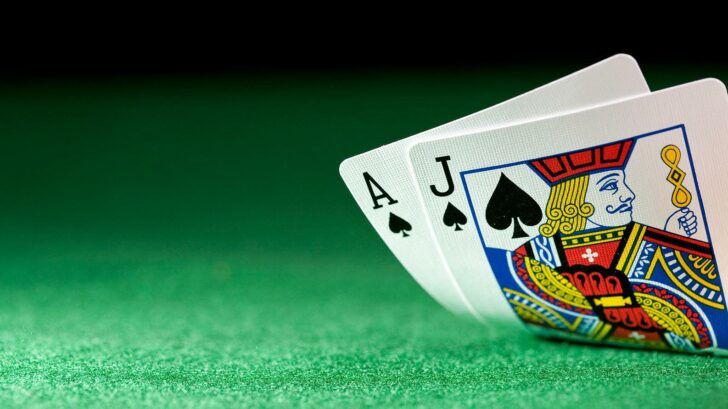Is Non-Random Shuffle Tracking a Viable Alternative to Card Counting Systems in Blackjack?

Most blackjack pros rely on counting cards to gain an advantage over the house. A minority of experts, however, argues that players can win by tracking non-random shuffles.
It isn’t a coincidence that many of the most successful blackjack players in history were brilliant mathematicians, Edward O. Thorp and Ken Uston being two notable examples. Winning at blackjack comes down to performing mathematical equations quickly and accurately.
A crucial part of blackjack, card counting, is especially relevant to students of mathematics. Counters attempt to predict which cards will be dealt in subsequent hands, doing so by a combination of process of elimination, simple division, and or course, counting.
Many influential blackjack pros have used mathematical simulations to formulate card counting systems. Most such systems involve simulating live dealers with random number generators to predict outcomes.
Critics of this approach, however, argue that computer simulations using random number generators don’t accurately replicate what happens in a real casino situation. The reason is that dealers don’t shuffle perfectly, so cards aren’t dealt in a perfectly random fashion.
Players who claim to follow and exploit “non-random shuffles” believe that they’ve discovered a way to consistently win at blackjack without using a card counting system.
The perfect shuffle
Before analyzing the non-random shuffle, it’s important to consider the fact that most players assume that the dealer shuffles cards in a perfectly symmetrical manner; he drops one card at a time, so no group of cards ever makes it past the shuffle.
A perfectly symmetrical shuffle means that cards are dealt in a perfectly random manner, which means the following: any card is as likely to be in one position in the deck as it is to be in any other position in the deck, and any card dealt is as likely to be followed by one card as any other card.
If that sounds vaguely confusing, it can be boiled down to the following lesson: it is impossible to anticipate which cards will be dealt in upcoming hands without usage of a card counting system. This is all intuitive, except that it isn’t entirely true.
A bad case of the clumps
Renowned blackjack professional and writer Arnold Snyder conducted a detailed mathematical study in which he found that cards are not dealt on a completely symmetrical basis. Dealers do make tiny errors which result in clumping.
In 1987 he published a paper stating that “casino shuffles are not random. The most recent work on shuffling indicates that seven riffles are required to randomly arrange a deck of cards.” This is because it takes seven riffles to eliminate all of the clumps.
Blackjack guru Richard Epstein calculated that when dealers shuffle the cards they drop one card 80% of the time, two cards 18% of the time and three or more cards 2% percent of the time.
While these numbers may seem small, they add up over the course of play, giving the enlightened player numerous opportunities to exploit non-random shuffles.
The next time you visit a casino pay attention to this. Throughout the course of several hands you’ll notice clumps of high cards appear at times, sprinkled with clumps of low cards and evenly mixed cards as well.
How to anticipate and exploit clumps
Experienced players can use non-random shuffles to their advantage if they have the blackjack strategy skills to anticipate when a clump of high cards or low cards is about to appear. Consider the following scenario:
A four (low card) is dealt. Assuming that shuffling is done symmetrically, one cannot reasonably anticipate the next card unless using a card counting system. The skilled clump follower knows better, however.
Having noticed that low cards are being dealt in clumps rather than symmetrically with high cards, the player anticipates that the next card will be low as well. If that card is to be dealt to him, he will most likely make a smaller wager, seeing that he has a disadvantage.
If the next card is to be dealt to the dealer, then the player has a lot of useful information about the dealer’s hand; being able to read the dealer’s upcard while realistically predicting that the hole card will be low.
Let’s say that the dealer’s upcard is a ten, and cards are being dealt from a clump of low cards. Knowing the dealer is unlikely to land a 20 or blackjack, the player can be more aggressive in going after the dealer.
The thinking is that players can spot tables where the dealer is more likely to clump. For example, watching dealers closely can tell you how accurate their shuffle is; how often they drop two and three cards together.
Can clump spotting replace use of a card counting system?
It has been established beyond doubt that non-random shuffles occur most of the time and that clumps of high or low cards appear in decks. It also appears that it is possible to recognize clumps and exploit that knowledge to beat the dealer more often.
However, even proponents of such a system maintain that it is extremely difficult to spot clumps effectively. Most of the time watching a dealer and attempting to spot non-random shuffles is not very effective.
Non-random shuffle tracking simply isn’t a viable alternative to card counting for the simple fact that it isn’t very efficient. It’s very difficult to do, and the returns are not noticeably higher than when using a hi-low system.




